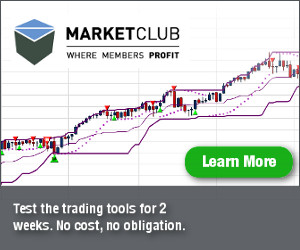Dow dropped 167 (not far above the lows), decliners over advancers 5-2 & NAZ sank 31. The MLP index slid fractionally to the 487s & the REIT index was off pocket change to the 297s. Junk bond funds fell while Treasuries rose. After a 9 day rally oil saw profit taking & gold fell the most in a week
as declining US jobless claims signaled a rebounding economy,
reducing demand for the metal as a haven.
AMJ (Alerian MLP Index tracking fund)
![Live 24 hours gold chart [Kitco Inc.]](http://www.kitco.com/images/live/gold.gif?0.6058051230705862)

Photo: Bloomberg
The cost of living rose in Apr &, showing the economy is making progress toward the Federal Reserve’s (FED) unemployment & inflation goals. The consumer-price index increased 0.3% last month, the biggest gain since Jun, according to the Labor Dept. Improving consumer spending is giving companies the confidence to charge more, helping inflation inch up toward the FED’s target. The gain in consumer prices last month matched the forecast. Costs were up 2% in the past 12 months, the most since Jul, after a 1.5% year-over-year advance in Mar. Stripping out volatile food & fuel, the core measure increased 0.2%, the same as in Mar. It climbed 1.8% from Apr 2013, the biggest year-to-year gain since Aug. While cheaper goods & services can be good news for consumers, too-low inflation makes it harder for borrowers to pay off debts & businesses to boost profits. The greater danger comes when a slowdown in inflation turns into deflation, or a protracted drop that leads households to delay purchases in anticipation of even lower prices. The FED’s 2% goal is based on the Commerce Dept inflation gauge that is tied to consumer expenditures. That measure climbed 1.1% in the 12 months thru Mar.
Price Increases Show U.S. Picking Up as Firings Drop: Economy
The fewest Americans in 7 years filed applications for unemployment benefits & consumer prices rose by the most in 10 months, adding to signs the economy is gaining momentum. Jobless claims dropped by 24K to 297K in the latest week, less than projected & the least since May 2007, according to the Labor Dept. While layoffs have been slowing, many companies are proceeding with caution on hiring until they see a sustained pickup in consumer spending. The 4-week average of claims dropped to 323K from 325K the week before. The number continuing to collect benefits declined 9K to 2.67M in the latest week, the fewest since Dec 2007. The unemployment rate among those eligible for benefits held at 2%. Employers added 288K jobs last month, the biggest increase in payrolls since Jan. Among them were automakers, which are expanding operations amid rising sales.
Jobless Claims in U.S. Reach Lowest Level in Seven Years
Photo: Bloomberg
The euro-area recovery failed to gather momentum inQ1, as France unexpectedly stalled & economies from Italy to the Netherlands shrank. Growth of just 0.2% for the bloc, half as much as forecasted, adds pressure on the ECB to deliver stimulus measures next month in its battle against weak inflation & anemic output. While German expansion doubled to 0.8%, that wasn’t enough to offset renewed weakness across the region, including a 0.7% drop in Portugal. ECB pres Draghi primed investors last week for further stimulus in Jun, saying the Governing Council is “comfortable with acting” next month. With the area’s recovery from a record-long recession still fragile, officials are battling to revive price growth, with the inflation rate at less than half ECB’s target. Dutch GDP fell 1.4% in Q1, the sharpest contraction in the euro area, Eurostat said. The Italian & Finnish economies shrank 0.1% & 0.4%, respectively. Even in the powerhouse, Germany, there are signs of a potential slowdown in Q2. The ZEW Center for European Economic Research, which aims to predict economic developments 6 months in advance, said this week its index of investor expectations slid for a 5th month in May to the lowest since Jan 2013. The Bundesbank has warned that while the economy shows an upward trend, growth will slow “noticeably” in Q2.
Euro-Area Growth Missing Forecast Keeps Pressure on ECB
The Dow managed to sneak up to a new record, but could not hold that advance. NAZ, dominated by tech issues, has been slipping & sliding for 10 weeks. Meanwhile the Dow has jumped about 4% which has been pretty much halved in the last 2 days. That disconnect is haunting the stock market. Raw economic data has been fairly good, but numbers behind the summary figures is not impressive. The unemployment rate fell to 6.3% but the participation rate is at a 35 year low & most of the jobs added during the recovery are low paying. The economic recovery continues weak & the revision to Q1 GDP 0.1% growth rate could drag it into minus territory. Q2 growth is shaping up as disappointing. Yield stocks are strong & that's defensive investing. Dow is back to down YTD.
Dow Jones Industrials
AMJ (Alerian MLP Index tracking fund)
Treasury yields:
U.S. 3-month |
0.02% | |
U.S. 2-year |
0.35% | |
U.S. 10-year |
2.50% |
| CLM14.NYM | ...Crude Oil Jun 14 | ...101.45 | (0.9%) |
![Live 24 hours gold chart [Kitco Inc.]](http://www.kitco.com/images/live/gold.gif?0.6058051230705862)

The cost of living rose in Apr &, showing the economy is making progress toward the Federal Reserve’s (FED) unemployment & inflation goals. The consumer-price index increased 0.3% last month, the biggest gain since Jun, according to the Labor Dept. Improving consumer spending is giving companies the confidence to charge more, helping inflation inch up toward the FED’s target. The gain in consumer prices last month matched the forecast. Costs were up 2% in the past 12 months, the most since Jul, after a 1.5% year-over-year advance in Mar. Stripping out volatile food & fuel, the core measure increased 0.2%, the same as in Mar. It climbed 1.8% from Apr 2013, the biggest year-to-year gain since Aug. While cheaper goods & services can be good news for consumers, too-low inflation makes it harder for borrowers to pay off debts & businesses to boost profits. The greater danger comes when a slowdown in inflation turns into deflation, or a protracted drop that leads households to delay purchases in anticipation of even lower prices. The FED’s 2% goal is based on the Commerce Dept inflation gauge that is tied to consumer expenditures. That measure climbed 1.1% in the 12 months thru Mar.
Price Increases Show U.S. Picking Up as Firings Drop: Economy
The fewest Americans in 7 years filed applications for unemployment benefits & consumer prices rose by the most in 10 months, adding to signs the economy is gaining momentum. Jobless claims dropped by 24K to 297K in the latest week, less than projected & the least since May 2007, according to the Labor Dept. While layoffs have been slowing, many companies are proceeding with caution on hiring until they see a sustained pickup in consumer spending. The 4-week average of claims dropped to 323K from 325K the week before. The number continuing to collect benefits declined 9K to 2.67M in the latest week, the fewest since Dec 2007. The unemployment rate among those eligible for benefits held at 2%. Employers added 288K jobs last month, the biggest increase in payrolls since Jan. Among them were automakers, which are expanding operations amid rising sales.
Jobless Claims in U.S. Reach Lowest Level in Seven Years
The euro-area recovery failed to gather momentum inQ1, as France unexpectedly stalled & economies from Italy to the Netherlands shrank. Growth of just 0.2% for the bloc, half as much as forecasted, adds pressure on the ECB to deliver stimulus measures next month in its battle against weak inflation & anemic output. While German expansion doubled to 0.8%, that wasn’t enough to offset renewed weakness across the region, including a 0.7% drop in Portugal. ECB pres Draghi primed investors last week for further stimulus in Jun, saying the Governing Council is “comfortable with acting” next month. With the area’s recovery from a record-long recession still fragile, officials are battling to revive price growth, with the inflation rate at less than half ECB’s target. Dutch GDP fell 1.4% in Q1, the sharpest contraction in the euro area, Eurostat said. The Italian & Finnish economies shrank 0.1% & 0.4%, respectively. Even in the powerhouse, Germany, there are signs of a potential slowdown in Q2. The ZEW Center for European Economic Research, which aims to predict economic developments 6 months in advance, said this week its index of investor expectations slid for a 5th month in May to the lowest since Jan 2013. The Bundesbank has warned that while the economy shows an upward trend, growth will slow “noticeably” in Q2.
Euro-Area Growth Missing Forecast Keeps Pressure on ECB
The Dow managed to sneak up to a new record, but could not hold that advance. NAZ, dominated by tech issues, has been slipping & sliding for 10 weeks. Meanwhile the Dow has jumped about 4% which has been pretty much halved in the last 2 days. That disconnect is haunting the stock market. Raw economic data has been fairly good, but numbers behind the summary figures is not impressive. The unemployment rate fell to 6.3% but the participation rate is at a 35 year low & most of the jobs added during the recovery are low paying. The economic recovery continues weak & the revision to Q1 GDP 0.1% growth rate could drag it into minus territory. Q2 growth is shaping up as disappointing. Yield stocks are strong & that's defensive investing. Dow is back to down YTD.
Dow Jones Industrials
I’m a huge fan of INO & from what I have seen so far, their service Marketclub! This isn’t a stripped down version, everything in MarketClub is available to you. I don’t want to give everything away, but you’ll have unlimited access to my favorite 3 tools: Trade Triangles, Smart Scan & Alerts! The best part is that the MarketClub customer support team will be providing UNLIMITED support! You can call or email for an instant response to any question, comment or concern. Here’s that link:
https://club.ino.com/join/specialtrial/index_free.html?a_aid=CD3289&a_bid=359ef9a3
I’d recommend you jump on this now.












No comments:
Post a Comment